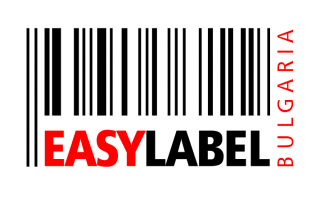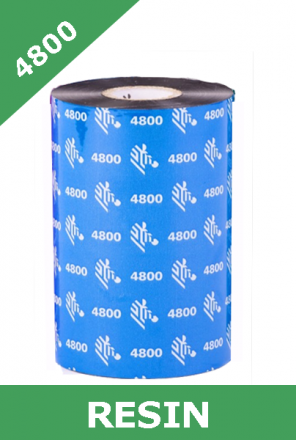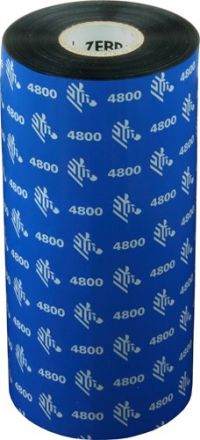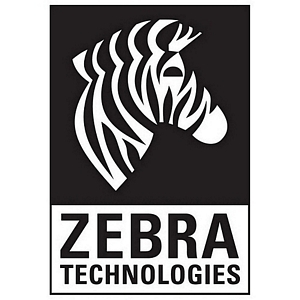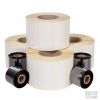4800
This high-quality resin ribbon provides excellent print quality, giving a solid, dense image. It offers fantastic smear and scratch resistance when printed with Zebra synthetic label materials and can withstand exposure to harsh chemicals. Additionally, 4800 can be used on selected Zebra top-coated paper labels and tags where high temperature resistance is required, such as labels which go through heat-shrink tunnels. UL and CSA recognized when used with Zebra's Polyester Z-Ultimate® 3000T and Z-Xtreme™ 4000T.
In application
A great all-purpose resin, 4800 is ideal for use in outdoor environments, such as asset tracking, plant tagging and labels exposed to weathering and temperature change. Suitable for automotive labelling, exposed to oil and grease. Labeling of surgical instruments requiring exposure to autoclave.
The most durable and resistant, Resin ribbons are specifically designed for demanding applications when printed with matt or glossy synthetic materials. Resin ribbons have superb abrasion resistance and offer the highest level of chemical resistance. Move to resin if your application is facing extreme temperature changes, exposure to harsh chemicals or requires long term durability.
The durability and resistance of any resin ribbon is driven by several different factors:
Material
Selecting the correct ribbon and material pairing is key to the durability of the image and how the print will respond to exposure in application.
Chemical Type
At Zebra we test our material and ribbon combinations against many different chemicals to qualify their resistance, however there are thousands of substances in the market, from mild to very abrasive. Therefore, we always recommend testing before bulk purchase.
Application Exposure
It's important to understand as much as possible about the application environment to be able to provide the best solution. Is the label exposed to a certain chemical for 2 minutes, or 2 days? Will the label be rubbed with a chemical scrub, exposing it to friction and abrasion? What are the temperature conditions, could it be deep freeze or extreme heat? All these environmental factors can alter the chemical resistance of the printed image.
